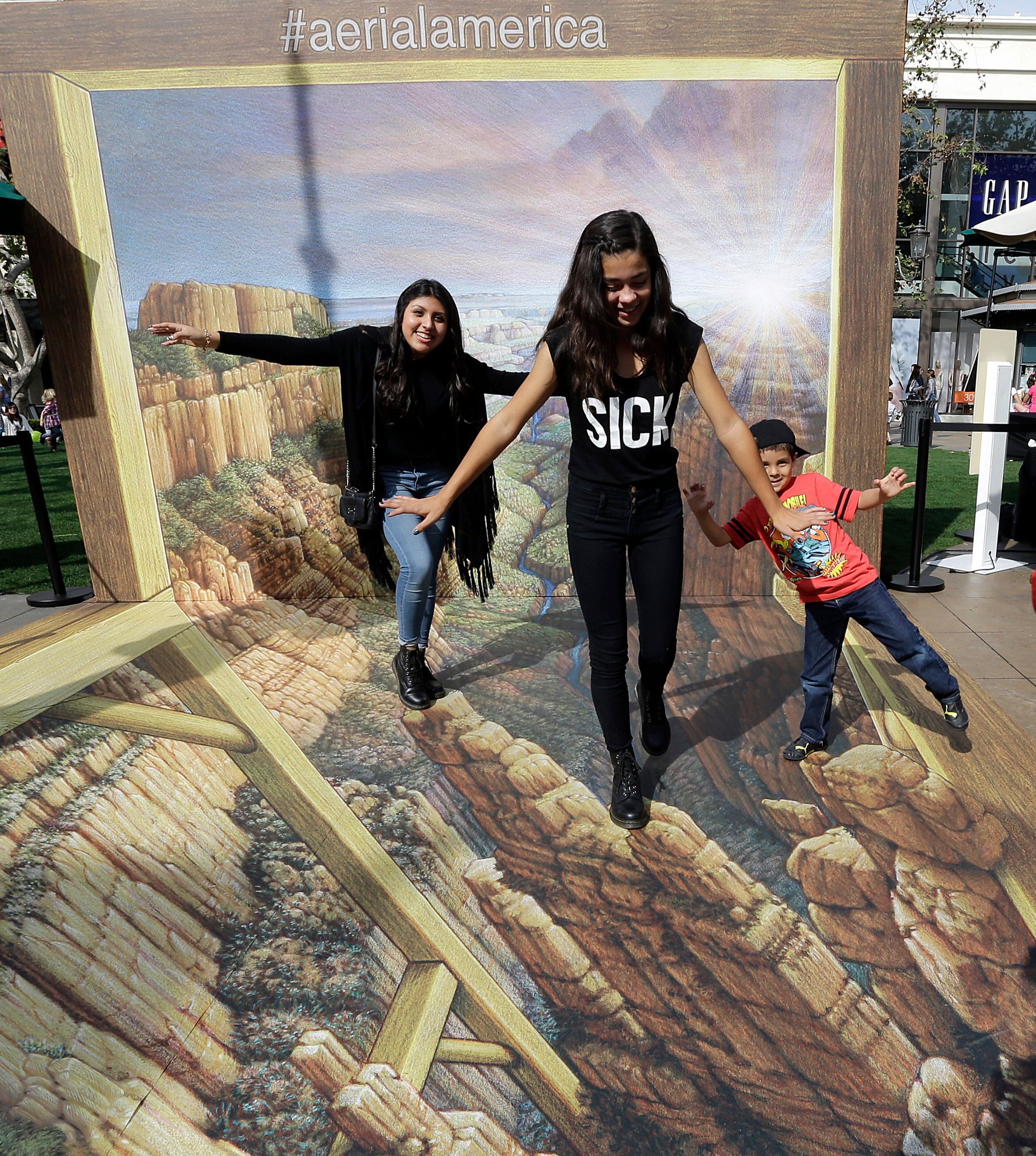Sidewalk chalk drawings have a colorful 500-year history
The sight of kids drawing on the pavement with sidewalk chalk is practically guaranteed to induce a bout of nostalgia. As summertime traditions go, getting down on the ground to let one’s artistic imagination run wild is right up there with running through sprinklers and setting up lemonade stands.


The sight of kids drawing on the pavement with sidewalk chalk is practically guaranteed to induce a bout of nostalgia. As summertime traditions go, getting down on the ground to let one’s artistic imagination run wild is right up there with running through sprinklers and setting up lemonade stands.
But what adults caught up in reveries about the long, lazy days of childhood may not realize is that sidewalk chalk art is a pastime that connects us not just to memories of our smaller selves, but to a rich historical tradition that goes all the way back to 16th-century Italy.
While people have been using chalk to create pictures since the age of cavemen, the Italian traveling artists known as madonnari appear to have been among the earliest practitioners of street art. Robin VanLear, the Cleveland Museum of Art’s director of community arts, explains in a post on the museum’s website:
In 16th-century Italy various beggars, primarily amputees, began looking for an advantage over the other beggars who proliferated in the plazas and market areas around cathedrals, especially on feast days. Some of them decided to create art, and charcoal from braziers became their first drawing implement. They were rewarded for their efforts with coins thrown down by pilgrims visiting the cathedrals. Ultimately the more artistic beggars began copying portraits of the Madonna, in particular those by the popular early 16th-century liturgical artist Raphael. They were dubbed Madonnari, painters of the Madonna.
As the 2011 book Asphalt Renaissance, written by the street artist Kurt Wenner along with B. Hansen and M. Hospodar, explains, madonnari realized they could maximize their earnings by working as traveling artists, moving between towns according to religious festival schedules. The Italian tradition continued for centuries, and soon street art began popping up in countries like England and Germany as well.
The English counterparts to madonnari, known as “screevers,” emerged in Victorian London and remained a fixture of the city up until World War II. Screevers were less closely associated with religious subject matter, but like the madonnari, they made a living with their ephemeral art.
In George Orwell’s Down and Out in Paris and London, an autobiographical book about poverty published in 1933, the author describes his encounter with a screever named Bozo. A self-declared “serious screever,” Bozo specialized in drawing political cartoons informed by the day’s news. (“Once a child got its head stuck in the railings of Chelsea Bridge,” Bozo said. “Well, I heard about it, and my cartoon was on the pavement before they’d got the child’s head out of the railings.”) Orwell suggests Bozo had ample competition among London street artists: “At that time there was a screever almost every twenty-five yards along the Embankment.” But whereas many of Bozo’s peers drew the same thing every day, Bozo distinguished himself by working on something new—a strategy that he said paid off. “The best thing’s to keep changing your picture, because when they see you drawing they’ll stop and watch you,” he explained.
Screevers were also memorialized in the 1964 Disney film Mary Poppins, set in Edwardian-era England. In the song “Chim Chim Cheree,” Bert, the twinkly-eyed chimney sweep played by Dick van Dyke, boasts about his side hustle:
Today I’m a screever, and as you can seeA screever’s an artist of ’ighest degree
And it’s all me own work from me own memory
Bert is notably less concerned than Bozo about making a living—though the same cannot be said about his hat. “No remuneration do I ask of you,” he sings, “But me cap would be glad of a copper or two.”
As VanLear explains, many European street artists fought in World Wars I and II, which meant that the practice of professional sidewalk chalk drawing faded for a good part of the 20th century. Then, in 1972, the Italian village of Grazie di Curtatone decided to host an international street-painting competition to honor the history of madonnari. The competition, known as Incontro Nazionale dei Madonnari, was a great success, attracting hundreds of European artists and helping to revive interest in sidewalk painting.
Roughly a decade later, its profile got a further boost from Wenner, who would become the founder of 3D street art—a technique that uses tricks of perspective to make pavement drawings appear to soar from the sidewalk or sink into it. Wenner was studying classical art in Italy in the 1980s and started drawing on pavement as a way to make money. He eventually made his way to Grazie’s festival, where he took first place three years in a row, then brought his enthusiasm for street painting back to the US, launching an annual festival—the first in the country—in his hometown of Santa Barbara, California, in 1986.


By the time Asphalt Renaissance was published in 2011, the US was home to between 50 and 100 street-painting festivals each year. Europe has also experienced a street-painting festival boom, with events in such varied locales as the Netherlands, Germany, France, England, and Serbia; there are options in Australia, Canada, and Mexico, too. So should you encounter some kids smeared with chalk dust this summer, tell them to keep at it. There’s a future in sidewalk chalk yet.